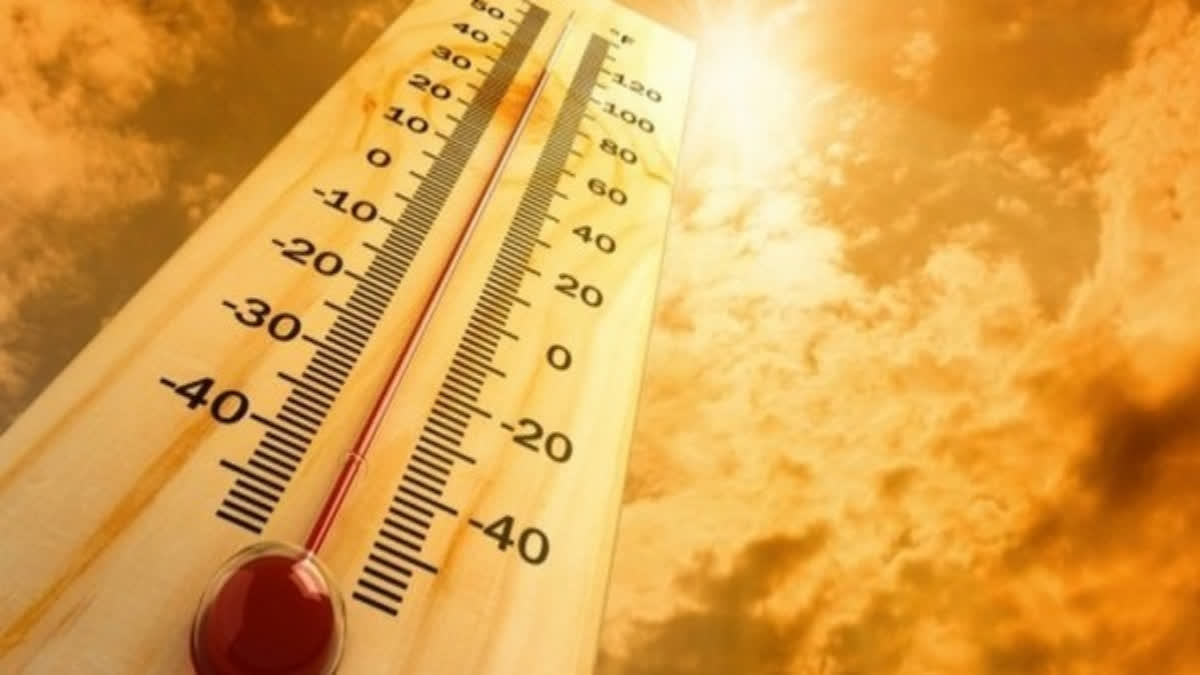Hyderabad: Climate change and its impact on health have started to make headlines, however, media houses are yet to figure out whether the subject qualifies for extensive coverage like any other major beat.
Health has been covered extensively, particularly after the pandemic, but climate change is yet to make the media fall for it. Recent deaths in Mumbai due to heatstroke during a rally was carried as spot news by most publications. In fact, we haven’t even adopted the word 'heatstroke' as a replacement for 'sunstroke'. The latter is still used in the media as a jargon for someone dying from the heat.
Heat waves are still not seen as a serious concern, which is why people hardly follow dos and don'ts while going through extreme heat conditions. Unless there are massive media outreach and sensitization campaigns, people will not respond to heatwaves as required.
Heat waves from the Middle East that warm the Indian Ocean often keep climate experts on their toes as the ocean is one of the warmest, a phenomenon that might have consequences for every Indian. The Indian Ocean determines the monsoon, but winds coming from the Pacific equally stand significant for India as they have the potential to cool down the warm winds of the Indian Ocean, thus impacting the monsoon.
Also read: 90% of India in danger zone due to heatwaves: Cambridge Study
Heatwave emerging due to the Indian Ocean have a tendency to kill people if it goes beyond a certain threshold. However, an early warning system can reduce the death rate, though the mortality rate has already been low since 2015. The government, with the help of scientists and experts, is trying to make vulnerable communities more resilient to climate change and reduce the risks it can have on human life. Heatwave Action Plans (HAP) have been developed by many states, with Ahmadabad being one of the first in South Asia to have a successful one.
Given the Heatwave Action Plan, a national threshold for mitigating the effects of heat is required. Women, children, and anyone over the age of 60 are especially vulnerable to heat. Women are primarily at risk because they dehydrate while travelling to avoid the urge to use the lavatory.
Among the outdoor workers, farmers are the most vulnerable to heatwaves since they are exposed to heat for a longer period of time. The intense heatwaves have taken away 220 billion hours of work from outdoor workers, which accounts for 23 million jobs, an average labour loss in 20 years. In the next 7 years, the overall loss of working hours is going to increase by 25 percent. According to Article 8 of the Paris Agreement, damage and loss caused by extreme heatwaves do not qualify for compensation.
People who die as a result of heatwaves are not entitled to compensation. Heat-related deaths and injuries will not be compensated unless heat waves are declared a national disaster. Climate change has impacted rainfall and snowfall patterns too. Areas that used to have lengthier dry spells and subsequent droughts are getting floods and those that used to get maximum rains are becoming dryer.
Dry areas like Chitur, Tirupati of Andra Pradesh have experienced floods, while there are sometimes reports of drought from Jharkhand, Bihar, and Uttar Pradesh. Flash floods, lightning and thunderstorm have become the new normal.
The deaths caused by lightning and thunders are also a new phenomenon. Amounts of snowfall and subsequent avalanches have also increased. Snow starts to melt the next day after it has fallen, rapidly submerging areas, as snowfall timings have shifted to February and March when it used to be November and December.
Also read: 'Save Ladakh': Wangchuk tweets video of youtuber campaigner standing barefoot in snow
Another aspect of climate change is forest fire, which has engulfed animals and birds in places that have never experienced forest fire before, roasting them in the fire. Forest fires, in the month of March, are more devastating when the birds are busy breeding before the monsoon, and are caught in a forest fire. Surprisingly, places like Goa had forest fires. Similarly, Dzukou Valley in the North East also reported forest fires, something that had never happened earlier. This new trend is seen as a result of climate change.
Not only are those living in forests at risk, but people living on the coasts are also confronting an existential crisis. Many islands have disappeared and scientists predict more flooding in coastal areas. Rising ocean waters indicate a significant danger to islands and coastal areas.
Cyclone shelters on the western coast are a classic example of how new cyclone paths have developed and fallen in areas that were never a target. The government together with scientists and experts are doing rounds of talks to discuss how to deal with the issue of climate change and its implications. Rather than trying to mitigate the problem, the government is focusing on adaptability whereas some experts seem to be in disagreement. Making people resilient could be one component of the plan, but mitigation should come first.



